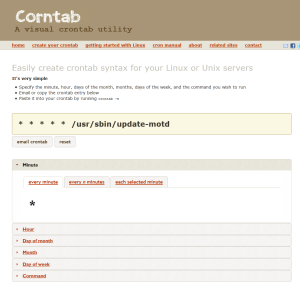
Photoshop: Exempt object against white background (Objekt vor weissem Hintergrund freistellen)
Illustrator: Convert type to outlines (Umwandeln von Text in Pfade)
Because I can't remember it:
- Select the type object.
- Choose Type > Create Outlines.
- German:
- Wählen Sie das Textobjekt aus.
- Wählen Sie „Schriftart“ > „In Pfade umwandeln“.
[via]https://helpx.adobe.com/illustrator/using/formatting-type.html#WS18156339-458C-45e1-8CD0-DD7931678BBE[/via]
Install .NET Framework 3.5 (incl. 2.0 and 3.0) on Windows/Windows Server
- Windows 8.x
- Windows 10
- Server 2012 R2
- Server 2016
- Server 2019
DISM /Online /Enable-Feature /FeatureName:NetFx3 /All /LimitAccess /Source:<drive>:\sources\sxs
pfSense ipfw rules
Lists zones:
ipfw zone list
Show rules (Zone ID 2 for example):
ipfw -x 2 show
Show all tables
ipfw -x 2 table all list
Show authenticated/allowed clients (in)
ipfw -x 2 table 1 list
Show authenticated/allowed clients (out)
ipfw -x 2 table 2 list
pfSense 2.2.5 CaptivePortal Patch
Patch for pfSense 2.2.5 to redirect proxy users to the authentification portal.
*** captiveportal.inc Wed Nov 04 22:52:22 2015
--- captiveportal_patched.inc Mon Dec 14 17:12:42 2015
***************
*** 539,544 ****
--- 539,548 ----
EOD;
$rulenum = 65310;
+ /* Deny direct access to local services before captive portal authentication */
+ $local_service_ports="3128,3129";
+ $cprules .= "add {$rulenum} skipto 65314 ip from any to table(100) {$local_service_ports} in\n";
+ $cprules .= "add {$rulenum} skipto 65314 ip from table(100) {$local_service_ports} to any out\n";
/* These tables contain host ips */
$cprules .= "add {$rulenum} pass ip from any to table(100) in\n";
$rulenum++;
***************
*** 578,591 ****
else
$listenporthttps = 8001 + $cpzoneid;
if (!isset($config['captiveportal'][$cpzone]['nohttpsforwards'])) {
! $cprules .= "add 65531 fwd 127.0.0.1,{$listenporthttps} tcp from any to any dst-port 443 in\n";
}
}
$cprules .= <<<EOD
# redirect non-authenticated clients to captive portal
! add 65532 fwd 127.0.0.1,{$listenporthttp} tcp from any to any dst-port 80 in
# let the responses from the captive portal web server back out
add 65533 pass tcp from any to any out
# block everything else
--- 582,596 ----
else
$listenporthttps = 8001 + $cpzoneid;
if (!isset($config['captiveportal'][$cpzone]['nohttpsforwards'])) {
! $cprules .= "add 65530 fwd 127.0.0.1,{$listenporthttps} tcp from any to any dst-port 443 in\n";
}
}
$cprules .= <<<EOD
# redirect non-authenticated clients to captive portal
! add 65531 fwd 127.0.0.1,{$listenporthttp} tcp from any to any dst-port 80 in
! add 65532 fwd 127.0.0.1,{$listenporthttp} tcp from any to any dst-port 3128 in
# let the responses from the captive portal web server back out
add 65533 pass tcp from any to any out
# block everything else
Diff created with WinMerge.
Easy access the Windows 8 or 10 Boot Options Menu
Hold down [Shift] while choosing Restart
or
shutdown.exe /r /o
Verifying Active Directory Installation
Check the status of the shared SYSVOL
dcdiag /test:netlogons
Verify DNS registration and functionality
dcdiag /test:dns
Verify communication with other domain controllers
nltest /dclist: <domain name>
Verify replication with other domain controllers
dcdiag /test:replications
Verify the availability of the operations masters
dcdiag /s: domaincontroller /test:knowsofroleholders /verbose dcdiag /s: domaincontroller /test:fsmocheck
[via]https://technet.microsoft.com/en-us/library/cc781459%28v=ws.10%29.aspx[/via]
Store VMware PowerCLI login credentials
Connect to VirtualCenter Server and enter credentials
Connect-VIServer -Server <Server>
Save the credentials to the credential store file (By default the credential store file is stored - encrypted - under the user profile directory)
New-VICredentialStoreItem -Host <Server> -User "<Username>" -Password "<Password>"
[via]https://blogs.vmware.com/PowerCLI/2011/11/have-you-seen-powerclis-credential-store-feature.html[/via]
LANCOM Router reboot telnet commands
Open a telnet connection to the router and run the following commands for a warm or cold reboot:
warm reboot (also soft reboot)
do/o/b
cold reboot (also cold boot, hard reboot or hard boot)
do/o/c
